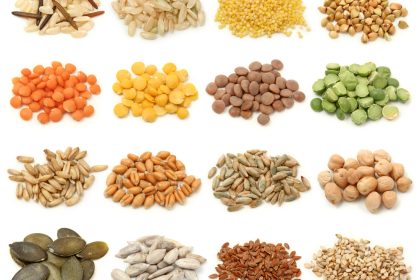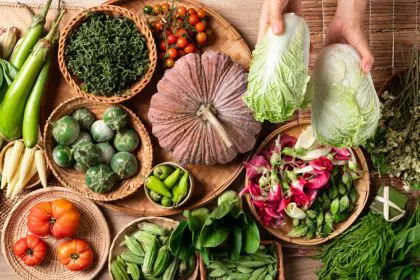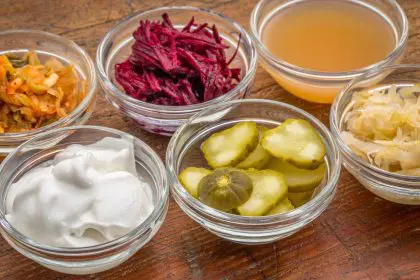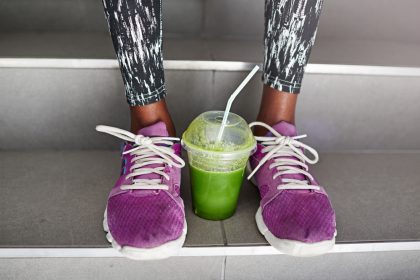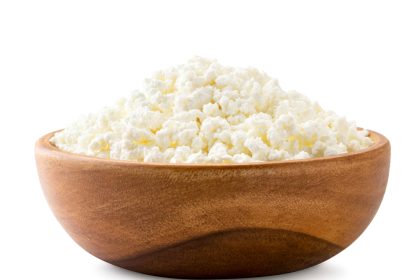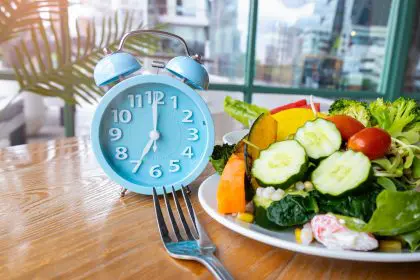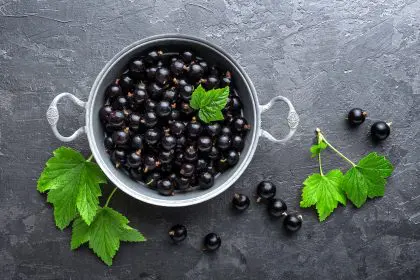That expensive organic produce and carefully sourced protein might not be delivering all the nutrition you paid for. The culprit? It’s likely sitting innocently on your stovetop. Growing evidence suggests the pans you cook with may dramatically affect the nutritional value of your food—sometimes enhancing it, but often unknowingly diminishing the very nutrients you’re trying to consume.
While most of us focus on ingredient quality and cooking methods, the material touching our food during preparation creates chemical interactions that can significantly alter nutrient content, bioavailability, and even introduce compounds you never intended to consume. This overlooked aspect of food preparation might explain why some people don’t experience the health benefits they expect from an otherwise excellent diet.
Let’s explore how different cookware materials interact with your food, which nutrients are most vulnerable to cookware-related losses, and how simple changes to your kitchen equipment might substantially improve your nutritional intake without changing your diet otherwise. The relationship between your pans and your health runs deeper than most nutrition experts acknowledge.
The mineral leaching you can’t see happening
Different cookware materials interact with food through various chemical reactions that affect mineral content through both addition and subtraction mechanisms.
Iron infusion occurs substantially with traditional cast iron pans, particularly when cooking acidic foods like tomato sauce. Research shows foods prepared in cast iron can gain between 2-10mg of iron per serving depending on cooking time, acidity, and moisture content. This iron transfer explains why cast iron cooking was historically recommended for menstruating women and children in developing regions where iron deficiency remains common.
Aluminum migration into food happens most significantly with uncoated aluminum cookware, especially when preparing acidic or salty foods. Studies show tomato sauce cooked in aluminum pans may absorb 3-6mg of aluminum per 100g serving. This migration raises concerns because aluminum has no biological role in the body and may compete with essential minerals for absorption while potentially accumulating in brain tissue over time.
Calcium and magnesium leaching from food into cookware or cooking water represents a frequently overlooked nutrient loss. Boiling vegetables in large water volumes with certain cookware can reduce calcium content by 20-70% depending on the vegetable type and cooking duration. This mineral loss explains why some people consuming seemingly calcium-rich diets still show suboptimal calcium status on nutritional testing.
Copper reactions with food create complex effects depending on specific food chemistry. While trace copper is essential for many enzymatic functions, excessive amounts can promote oxidation of vitamins and other nutrients. Unlined copper cookware can increase food copper content by 3-8mg per serving with acidic foods—amounts that may interfere with zinc absorption and potentially reach problematic levels with regular use.
Nickel transfer from stainless steel varies dramatically between different grades and manufacturing qualities. Higher-nickel stainless steel (commonly used in cheaper cookware lines) can release 0.1-0.3mg of nickel per serving when cooking acidic foods. This transfer becomes particularly relevant for individuals with nickel sensitivity, where even small amounts can trigger inflammatory responses affecting both digestion and skin health.
The vitamin vulnerability most people overlook
Beyond minerals, vitamins undergo significant interactions with cookware materials through oxidation, catalytic degradation, and binding mechanisms that can substantially reduce their bioavailability.
Vitamin C degradation accelerates dramatically when in contact with certain metals, particularly copper, aluminum, and low-quality stainless steel. Research demonstrates that cooking vitamin C-rich foods like bell peppers in copper pans can destroy up to 90% of the vitamin within 20 minutes through catalytic oxidation—significantly more than would be lost through heat alone. This catalytic effect explains why some cooking methods cause more vitamin loss than others despite similar temperatures and durations.
Fat-soluble vitamin stability (vitamins A, D, E and K) varies substantially depending on cookware material. These vitamins degrade primarily through oxidation processes that certain metals accelerate. Studies show that cooking oil-based foods in reactive metals can increase vitamin E destruction by 30-45% compared to using non-reactive ceramics at identical temperatures. This accelerated degradation partially explains why some high-fat foods don’t deliver expected nutritional benefits despite quality ingredients.
B vitamin binding to aluminum creates complexes that significantly reduce absorption. Research indicates that foods high in B vitamins, particularly B12 and folate, can form bonds with aluminum ions that prevent normal absorption in the digestive tract. This binding effect means that even if B vitamins remain present in food after cooking, they may become substantially less bioavailable when prepared in aluminum cookware.
Antioxidant compound degradation shows particular sensitivity to cookware material. Polyphenols, anthocyanins, and other beneficial plant compounds degrade through oxidation reactions that certain metals catalyze. Studies comparing identical vegetable preparations in different cookware found that reactive metals like copper and uncoated aluminum accelerated antioxidant degradation by 40-60% compared to glass or ceramic vessels at the same temperature and duration.
Pro-vitamin conversion efficiency—like beta-carotene to vitamin A—depends partly on cooking vessel composition. The transformation of precursor compounds into active vitamins requires specific biochemical conditions that cookware can either support or hinder. Research shows that cooking carotene-rich foods in iron cookware may actually enhance vitamin A activity compared to using non-reactive materials, potentially due to iron’s role as a cofactor in certain conversion processes.
The metal migration affecting absorption
Beyond direct nutrient alteration, metals from cookware can affect how efficiently your body absorbs the nutrients that remain intact through various competitive and enhancing mechanisms.
Zinc-copper competition intensifies when cooking with unlined copper or brass vessels. These materials can increase food copper content to levels that directly compete with zinc for intestinal absorption pathways. Studies show that high copper intake can reduce zinc absorption by 40-60% through this competitive mechanism, potentially creating functional zinc deficiency despite adequate dietary intake.
Iron overload risk varies dramatically with cookware choices. While cast iron cooking benefits individuals with iron deficiency, the same iron transfer can potentially contribute to excessive iron accumulation in those with hemochromatosis or certain genetic factors affecting iron regulation. This potential overload risk affects approximately 1 in 200 people of Northern European descent who carry genetic variants for increased iron absorption.
Calcium absorption interference occurs with regular aluminum exposure from cookware. Aluminum ions can bind with dietary calcium in the digestive tract, forming compounds that prevent normal calcium absorption. Studies show this binding effect may reduce calcium bioavailability by 15-30% from foods prepared in aluminum cookware, creating a hidden factor in calcium utilization that standard nutritional calculations don’t account for.
Manganese-iron absorption relationships create complex interactions affected by cookware. Both minerals use similar absorption pathways, and excessive iron from cookware can significantly reduce manganese absorption. Research indicates that high iron levels from cookware may reduce manganese absorption by 30-50%, potentially affecting the nervous system functions that require this essential mineral.
Selenium bioavailability shows particular sensitivity to copper exposure during cooking. Selenium forms stable complexes with copper that substantially reduce its absorption and biological activity. Studies demonstrate that cooking selenium-rich foods in copper vessels can reduce functional selenium availability by up to 60%, potentially affecting thyroid function and antioxidant systems that depend on adequate selenium status.
The non-stick chemicals entering your food
Modern non-stick cookware introduces additional considerations through the potential migration of coating compounds into food under various cooking conditions.
PFAS compounds (including PFOA and PTFE) from older non-stick cookware can migrate into food when coatings deteriorate or overheat. Research shows detectable PFAS transfer primarily occurs with damaged coatings or heating above 500°F (260°C). These persistent compounds have been associated with hormonal effects, immune system alterations, and potential developmental impacts in high-exposure scenarios, creating concern about cumulative exposure through regularly cooked foods.
Nano-ceramic particle migration represents an emerging research area as these newer non-stick technologies gain popularity. Initial studies show significantly lower migration rates compared to traditional non-stick coatings, with particle transfer primarily occurring only with scratched or damaged surfaces. The biological significance of these nano-sized particles remains under investigation, with current evidence suggesting minimal absorption but ongoing research into potential cumulative effects.
Silicone component leaching occurs primarily with lower-quality silicone bakeware at temperatures exceeding manufacturer recommendations. Testing shows detectable siloxane migration into fatty foods when heating beyond 425°F (220°C), particularly with newly purchased products. While these compounds appear to have limited biological activity, research into their long-term health effects continues, with particular focus on potential endocrine interactions.
Coating stabilizers and manufacturing additives often receive less attention than primary coating compounds but can migrate into food under specific conditions. Substances used to improve coating adherence or manufacturing properties may not appear on product labeling but can transfer to food when cookware is new or when coatings begin deteriorating. These compounds vary widely between manufacturers and specific product lines, creating challenges for comprehensive safety assessment.
The “polymer fume fever” phenomenon represents an indirect exposure route when certain non-stick coatings overheat. While not creating food contamination directly, the airborne decomposition products from overheated PTFE coatings can cause temporary flu-like symptoms when inhaled. This effect occurs primarily above 500°F (260°C) and represents an often-overlooked exposure pathway related to cookware choices.
The reactive surfaces affecting fat quality
Cooking fats undergo significant chemical transformations depending on cookware materials through oxidation, hydrogenation, and other reaction mechanisms that alter their nutritional properties.
Oxidative rancidity accelerates dramatically on reactive metal surfaces, particularly copper, aluminum, and low-quality stainless steel. Research demonstrates cooking oils can develop over 50% more harmful lipid peroxides when heated in copper pans compared to ceramic vessels at identical temperatures. These oxidation products not only reduce nutritional value but may actively contribute to inflammatory processes and cellular damage.
Trans fat formation during high-heat cooking varies significantly with different cookware materials. While primarily associated with industrial hydrogenation, small amounts of trans fats can form during high-heat cooking, with the reaction rate influenced by cookware composition. Studies show reactive metal surfaces can increase trans fat formation by 15-40% compared to more stable materials when oils reach their smoke point.
Essential fatty acid preservation shows substantial cookware dependence. Omega-3 fatty acids, particularly vulnerable to oxidative damage, degrade at different rates depending on cooking surface. Research comparing identical cooking procedures found that omega-3 retention was 20-35% higher when using ceramic or high-quality enameled cookware compared to reactive metals, potentially preserving these beneficial compounds for absorption.
Polycyclic aromatic hydrocarbon (PAH) formation during high-heat cooking varies substantially between cookware types. These potentially carcinogenic compounds form more readily on certain cooking surfaces, particularly damaged non-stick coatings and poorly seasoned cast iron. Testing shows PAH levels can be 3-5 times higher in foods prepared on these surfaces compared to well-maintained ceramic or high-quality stainless steel when using identical high-heat cooking methods.
Advanced glycation end product (AGE) development—compounds formed when proteins react with sugars during cooking—shows significant cookware dependence. These inflammatory compounds form more readily on certain cooking surfaces that create localized overheating points. Research demonstrates that foods cooked in thin aluminum or low-quality stainless steel develop 30-50% more AGEs compared to identical recipes prepared in thick-bottomed higher-quality vessels that distribute heat more evenly.
The safest options for specific cooking needs
Different cooking applications create distinct requirements for optimal nutrient preservation through various material properties and reactivity considerations.
Acidic food preparation creates particularly challenging cookware requirements due to increased reactivity with most metals. For these applications, glass, high-quality enamel, and certain ceramics provide the most inert cooking surfaces that prevent both undesirable metal migration and accelerated nutrient degradation. This non-reactivity explains why traditional tomato sauce recipes often specified glass or ceramic vessels rather than metal pots despite their seemingly more convenient properties.
High-heat searing methods present specific material considerations balancing heat transfer capabilities with nutritional preservation. Carbon steel and well-seasoned cast iron provide excellent heat retention and distribution while developing relatively stable cooking surfaces when properly maintained. Their thermal mass prevents the temperature fluctuations that can increase oxidative damage to nutrients during high-heat cooking methods.
Long-duration simmering and braising methods create extended food-cookware contact that amplifies both beneficial and potentially detrimental transfers. For these applications, enameled cast iron provides an optimal balance—offering the heat stability benefits of cast iron while the enamel coating prevents excessive metal migration during prolonged cooking. This combination explains why these vessels have remained the professional standard for such applications despite their higher cost.
Water-based cooking methods like steaming and boiling present unique considerations for water-soluble nutrient retention. Stainless steel with an aluminum or copper core provides effective heat distribution to maintain stable temperatures while the stainless surface minimizes reactivity. For maximum nutrient preservation, materials that allow quick heating with minimal water volume typically preserve more water-soluble vitamins than options requiring larger water volumes or longer heating times.
Baking applications require materials that provide even heating without introducing potentially harmful compounds at higher temperatures. Uncoated aluminum actually performs well here despite concerns with other cooking methods, as the relatively short baking duration and typically non-acidic nature of baked goods minimizes aluminum migration. For acidic baked goods, parchment paper provides an effective barrier between food and metal bakeware, explaining its traditional use with fruit-based recipes.
The practical strategies for healthier cooking
Beyond specific material choices, several practical approaches can maximize nutrient preservation and minimize undesirable interactions regardless of your current cookware situation.
The acidity awareness approach focuses on matching cookware to food pH to prevent problematic reactions. By reserving non-reactive cookware (glass, ceramic, high-quality enamel) specifically for acidic foods while using traditional metals for neutral or alkaline preparations, you can significantly reduce undesirable metal migration without completely replacing your cookware collection. This targeted strategy addresses the most problematic interactions while allowing continued use of existing kitchen equipment.
Seasoning maintenance for cast iron and carbon steel creates progressive improvement in cooking surface stability. Properly maintained seasoning layers form polymerized oil barriers between food and metal that dramatically reduce both iron transfer and surface reactivity. Research shows well-seasoned pans with black, smooth surfaces can reduce iron leaching by 90% compared to newly purchased or poorly maintained versions, significantly moderating what would otherwise be excessive iron transfer.
The temperature management approach focuses on preventing the overheating that accelerates both nutrient destruction and undesirable compound formation regardless of cookware material. Using thicker, heavier cookware that distributes heat more evenly, preheating pans properly before adding food, and avoiding unnecessarily high heat settings can preserve significantly more nutrients even when using less than ideal cookware materials.
Cooking duration minimization represents one of the most effective strategies for preserving heat-sensitive nutrients regardless of cookware choice. Techniques like blanching vegetables before finishing with other methods, using pressure cookers to reduce high-heat exposure time, and employing rapid-cooking methods when appropriate can preserve significantly more vitamins and antioxidants than traditional longer-duration approaches.
Strategic cookware combination—using different materials for different cooking stages—often provides optimal results in complex recipes. For example, marinating in glass containers, initial searing in cast iron for proper heat distribution, then transferring to ceramic vessels for simmering acidic components combines the benefits of each material where they matter most while avoiding their disadvantages.
The impact of cookware on nutrition represents a fascinating intersection of chemistry, material science, and nutritional biochemistry that deserves more attention in both culinary and nutritional discussions. While no cookware material proves perfect for all applications, understanding these interactions allows strategic choices that can significantly enhance the nutritional value of your meals without changing your actual ingredients or recipes.
What makes this topic particularly relevant is that cookware-related nutrient interactions affect even the highest-quality, organic, and carefully sourced ingredients. Even the most meticulously planned diet can fall short of its nutritional potential when prepared with cookware that degrades key nutrients or introduces compounds that interfere with their absorption.
The good news is that you don’t need to replace all your cookware at once to see benefits. Strategic use of your existing pieces based on food type, acidity, and cooking method can significantly reduce problematic interactions, while gradually investing in a few key versatile pieces made from optimal materials can progressively enhance your kitchen’s nutritional capabilities.
Perhaps most importantly, this knowledge empowers you to make informed decisions about where cookware quality truly matters nutritionally versus where premium materials offer primarily aesthetic or convenience benefits rather than substantial nutritional advantages. This practical understanding lets you invest strategically in the pieces that most significantly affect your nutritional outcomes.


